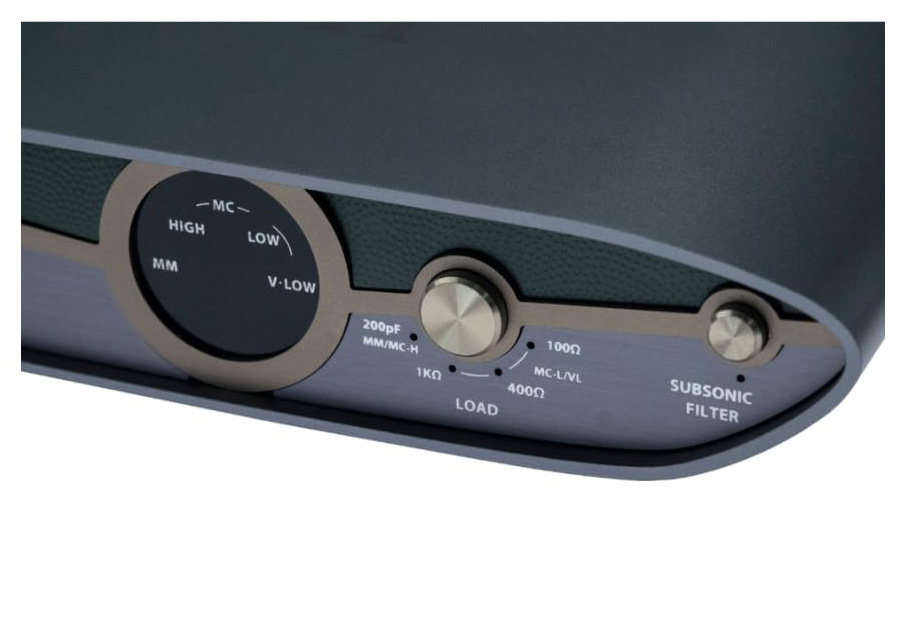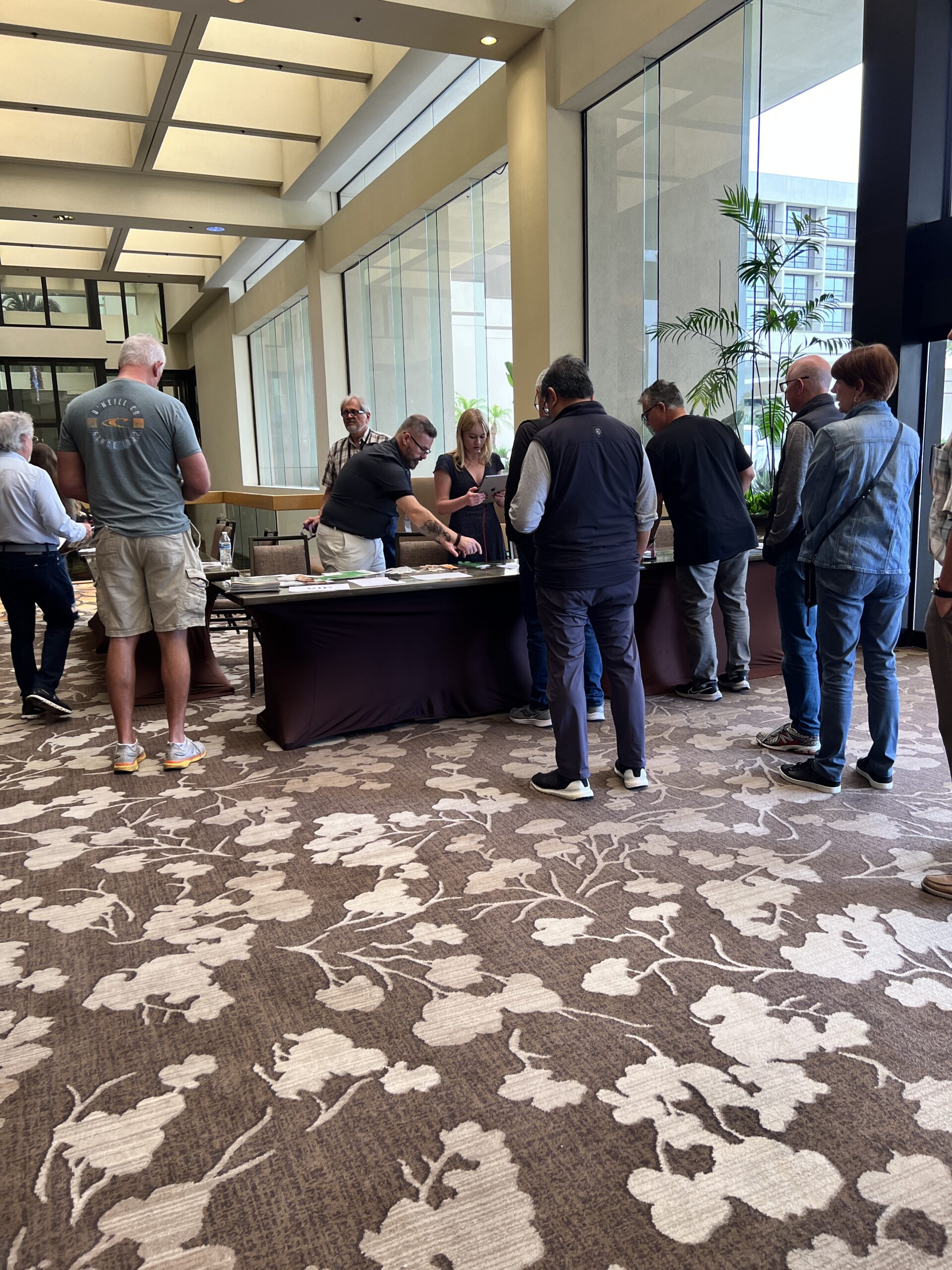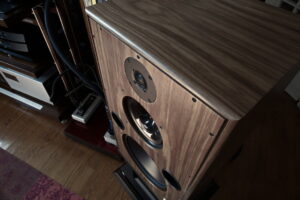The drivers on the new Fritz Carrera BE Loudspeakers have been used in one combination or another in more than a few speaker designs to varying degrees of success, and usually costing many times more than the new Fritz design. I say this because I have heard a number of these speakers. Most of these speakers are considerably more expensive than the Fritz Carreras. A number of them do not outperform the Carreras. Go figure. A somewhat bold statement in the beginning of a review. But having spent months with these new speakers I can attest to their abilities. Many times with ultra expensive equipment you are buying cosmetics, you are buying a story (ad copy) and you are buying into what the market dictates in regard to price. I would rather spend $3500 on a product that delivers solid performance than one three or four times the cost that I can't distinguish from the less expensive speakers. As I said I listened to the them for quite a while before and after taking notes and writing. With all of the amps I have at hand and with many different sources. I even went from my EVO HTC M8 phone and Hisense Tablet via my Audioengine B1, (mostly played as background music) my Marantz BD 8002 stock Blue Ray player, to the most excellent Marantz TOC modified SA15S2 SACD player, to my new humble but overachieving Peachtree Dacit. Let's not forget my Stabi/Stogi TT outfit too. I purposely played the worse sounding recordings from my collection (usually the best music) to the best sounding audiophile discs both CD and vinyl to see how the these speakers would handle this broad spectrum of music. The one exception would be the absence of my Margules U280SC which was out being repaired and upgraded. The Margules would be replaced by a worthy contender in the form of my Antique Sound Labs MGSPM 25 DTS mono block tube amps. I have had these babies many years. When I first got them they saw many long hours of service in my system. For this review I ran them with my Marantz Reference PM15S1 intergraded amplifier in preamp mode. The combination of Marantz/ASL turned out to be an excellent pairing. Of course as mentioned my Marantz has the excellent TOC Reference mods. But the ASL's have also been modified. Popping the bottom lid to re-bias the tubes revealed something I have forgotten. Theta caps replaced the stock caps and a set of Bybee filters were installed in critical positions in each amp. Wow. As I said this combination yielded excellent results with the Fritz Carreras. This combination displayed great resolution and dynamics, 3D soundstage and exacting imaging and brought out subtle detailed nuance with ease. Okay it is not a stock system from one manufacture. But I didn't have all of this work done to these two amps for nothing. Yes I don't drive stock. I feel I would not be getting all the performance from these units if they were stock. In fact I know it.
For those of us that are off the grid here are the specs. FR 36Hz-40khz +/- 3dB, impedance- 8 Ohms nominal, sensitivity is -87 dB (1 Watt, 2.83 V @ 1 Meter) which means they are pretty easy to drive. The recommended power to drive them is 50-200 watts. The mid/bass driver is a 7 inch ScanSpeak Revelator and the tweeter is a 1" Transducer Labs high purity (99.4%) beryllium dome, double magnet Design with Under-hung voice Coil (1.2mm Linear Excursion). The Series crossover is a mainstay of Fritz Loudspeaker designs and is also employed here without any capacitors or resistors in the circuit with the tweeter and inductor on the mid/bass driver! The dimensions and weight are 16H x 9W x 12D and are 34 pounds each. A single pair of binding posts are around back as is the port. And yes the build quality on these as with all Fritz Loudspeakers is impeccable. The review sample is in a dark walnut and are beautiful. other finishes are also available upon request. Fritz told me that the pair he brought me already had some time on them so break in was not an issue. I set them up on my trusty old pair of Lovan stands with four each Herbies Audio Labs Fat Dots as an interface between speaker and metal stand.
My Fritz Morel speakers have a slightly sweet and warm sound to them. That is probably the secret to one being able to listen to them for long periods of time. Although they are very much a high resolution speaker, they are also here for the party. The Carreras have a very neutral tone and very even handed way of handling the frequency spectrum. As you are listening there are no frequency imbalances, no treble distortions, no bloated or overreaching bass or midrange anomalies. Even slightly. They were just in my living room passing the music along almost as unobtrusive as a pair of speakers can. The bigger cabinet means a bigger output of bass. Bass was noticeably deeper and more solid than with my Morels. Subtle bass details were also more easily fleshed out. On the Stereophile Test Disc 2 I noticed very solid output to 50Hz, dropping slightly at 60, 40, and 31Hz but honestly pretty good down to 31Hz. Bass was barely audible at 20 Hz but was still there. The treble has very clean and even output to 12kHz. The treble sounds very clear and grain free. I heard no brightness or gritty sibilance. It was extended and clean and there was a seamless transition from the upper midrange to the treble. The midrange has a natural texture to vocals and high end instruments sound clean and accurate. The overall sound is very natural with no colorations. The overall phrase that kept popping up in my mind while listening to these speakers was natural resolution.
The very even handed tonal balance of the Carreras was most evident on the self titled Lyle Mays solo CD. After a long day at work I like to go home and relax into this disc for a little unwind time once in a while. Recorded in the eighties this disc must be considered an oldie by today's standards but the music holds up well. From the lowest notes of Mays' piano to the upper registers there was a natural smoothness and cohesion that went hand in hand with the natural timbre. The natural decay of notes and the air and space they disappeared in to was both pleasing and interesting to listen to. These qualities were also apparent on a David Fung CD called The Piano on Yartlung Records. This is also another relax after work CD. On this disc Fung plays the music of Mozart, Chopin and others. Again there was a smooth and natural transition of notes on this disc from bottom to top as there was on the Mozart Horn Concerto on L'oiseau-Lyre with the academy of Ancient Music with Christopher Hogwood. I almost forgot to take notes and listen critically before the whole disc was finished. For a stand mounted speaker it can handle the dynamics of a full orchestra well. This is a point I think Fritz Helier is very proud of with his stand mounted speakers. The sound was also very even handed and spacious with very good weight to the sound of a full orchestra on discs like The Best of Stravinsky on Naxos to Howard Hanson on a Telarc SACD. Dynamic swings on the Stravinsky were handled especially well. The quality of each recording also coming through very clearly. I am still on a Joe Satriani kick from the last review. I just love this guys picking style. From the raucous "Always with You, Always With Me" from his Surfing With The Aliens disc to the delicate song, "Bamboo" on the CD, Is There Love In Space, the transition from bass to midrange to treble was seamless. The studio reverb sounded sweet on these recordings. Going back to the eighties for a listen to the Blade Runner soundtrack on Audio Fidelity Records on beautiful red vinyl I noticed the same clean, natural and high degree of resolution. with this combination of gear and music I just gave up what I was doing and enjoyed both sides of this LP in what seemed like an instant.
At this point it was hard to resist a comparison to the other speakers in my house. The Fritz Morels and Tonian Labs TL-D1 had their work cut out for them. I set each speaker side by side and had my son on speaker wire switching duty. Thank God for Z plugs. I set the Morels up first. Physically the Morels are smaller than their bigger brothers. The first noticeable difference was in the bass. The Carreras' bass output is deeper, more solid, more taut, and cleaner. At first I was surprised because the little Morels are pretty satisfying in the bass frequencies, especially when watching movies. The Morels were also not as neutral or as transparent. This was evident on the Hansen SACD. The Carreras carve out a natural sounding, clean and realistic image along with a very dimensional soundstage. This was especially apparent on the old group from the 70's, War and their song, "All Day Music". When the singer sings the words, Yeah, Yeah, at the beginning of the track those words sounded more fleshed out, more dimensional and less dark with slightly more realistic tone through the Carreras than through the Morels. I noticed similar characteristics listening to Jack Johnson's In Between Dreams album. There are a lot of delicate nuance played on Johnson's guitar and they are brought out easily by the Carreras. Also the shaker played on some tracks on Bebel Gilberto's CD, Tanto Tempo sounded more clear and distinct on the new speakers. But this is not surprising when comparing a speaker costing $3500 to one that costs $1600. Especially in the Fritz line up. You better hear a difference. The Fritz Morels are no slouches. They are fun, musical, and resolving speakers. They just met their match with their bigger brother.
My Tonian Labs TL-D1 speakers are back in my system. I will cut a long story short by saying they are back in my system. So in they went right beside the challengers. Two box speakers, one floor standing, one stand mounted one dark walnut and one light birch. But the differences don't stop there. I found the Carreras cooler sounding which goes with the neutral tone I mentioned earlier. To my surprise the Tonian's sounded overall ever so slightly warmer from the upper mid range to the very top end. Up top things got very interesting. The Carreras pronounced 'S' sounds a little more exacting. Weather they were being more accurate to the digital recordings I was feeding them or the Tonian's were prettying thing up in the top end is a hard call. The ribbon tweeters in the TL-D1's carve out a very clean, exacting and holographic image with absolutely no smearing in the treble. This really gave the Carreras very stiff competition in this area. This was easily noticed on the Johnson and Gilberto CD's. This is really fantastic performance for a $2000 speaker and a strength of the TL-D1's.
As far as bass is concerned the bigger cabinet of the TL-D1's should mean these speakers push out much more bass more easily, and they do. But the differences were not as gargantuan as it would seem. This seems to coincide with Fritz' design philosophy that a well designed stand mounted speaker can have as much satisfying bass output as most floor standing speakers. Maybe that is why we don't see that many floor standers in his line up. But the Tonian's fill the room with deeper bass that is more solid. One might say that it is a question of physics and the comparison is not fair. Yes. Also Tony Minasian designed the TL-D1's with a built in bass adjustment. They come with five small birch panels that can be installed over the rear port to tailor the bass output to your particular taste and room. I use the panels designed to create the deepest output. The disc I used for this informal test is a CD from Subtone called Best Of Ultimate Bass. Yes this is a non-audiophile approved CD but this is the way we sometimes roll in my system and at my house. The tracks on this CD contain some of the lowest, badass bass I have ever heard. Why fool around when you can go straight to the source. The compositions are mostly made up of synth and drum kit. I especially enjoy track 7, "The Return (Bass Unlimited)". These tracks easily showed the differences of low bass performance between these two speakers. First, the CD goes way beyond the low bass reach of each speaker. I have heard this disc on a system that put out far more bass than either of these two speakers and it was still struggling. But aside from deep bass output I also got a handle on how each speaker could handle power. Besides being the more efficient speaker, the TL-D1's seemed to reach their power handling limit sooner than the Carreras. Don't get me wrong the volume was quite high and the bass was solid, quite deep and filled the room. But I didn't want to blow up those Fostex drivers prematurely. The Carreras on the other hand could handle more power and seemed to have more output without strain. I could push them much harder without them straining. In fact I backed off before the Carreras did. In the end this was quite a bit of fun and it gave me an excuse to put on a killer bass CD.
The Fritz Carreras are definitely on the top level of refinement in the company's line up. With their performance and price, they are going to prove very stiff competition for two way, ported box speakers that are substantially more expensive then they are. What I respect quite a bit about them is that they played my humblest and mediocre sources and recordings in an even handed manner. This should not be taken lightly. What use is a pair of speakers and an audio system if you can't enjoy it to the fullest extent. But what I really loved about them is the way they handled high end sources. This is what your hard earned cash pays extra for. And this is what we want as audiophiles. They easily delivered a high degree of detail, solid bass and holographic sound. And a very musical performance that very quickly gets you involved in whatever you are listening to. Well done, design goals met, go have a listen.
Carrera BE Loudspeaker
Retail: $3500 a pair
Fritz Loudspeakers
310-379-8190





































